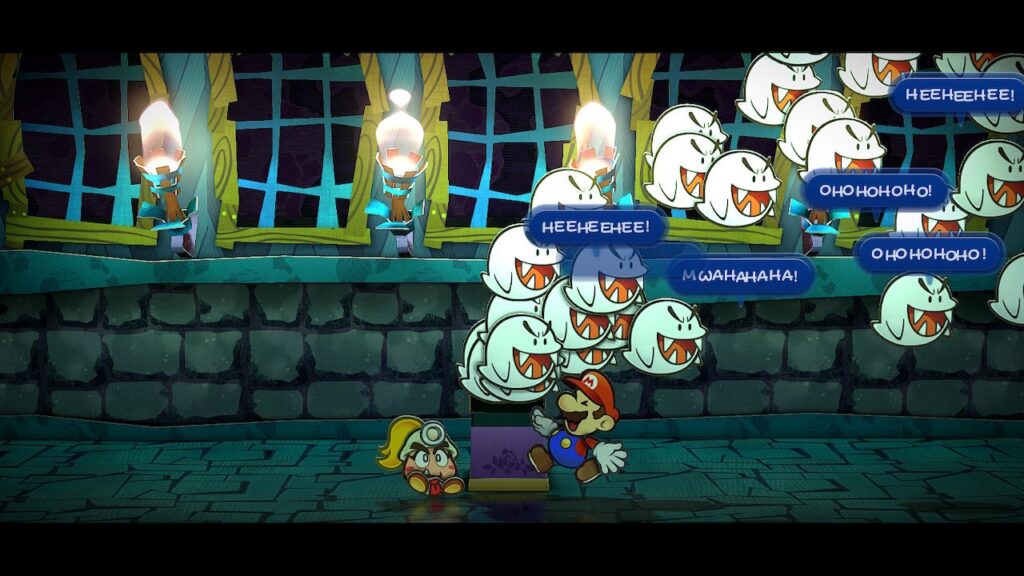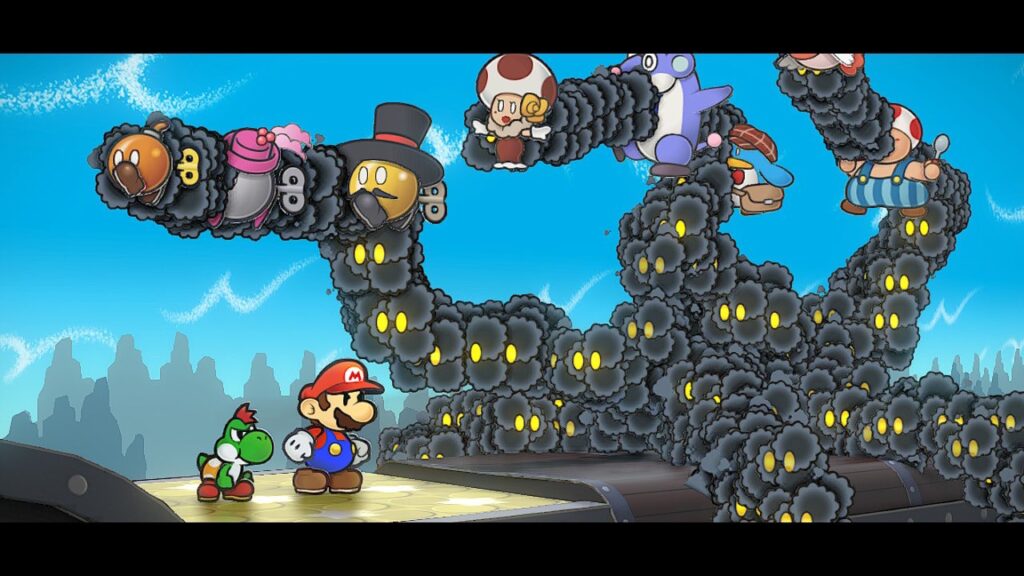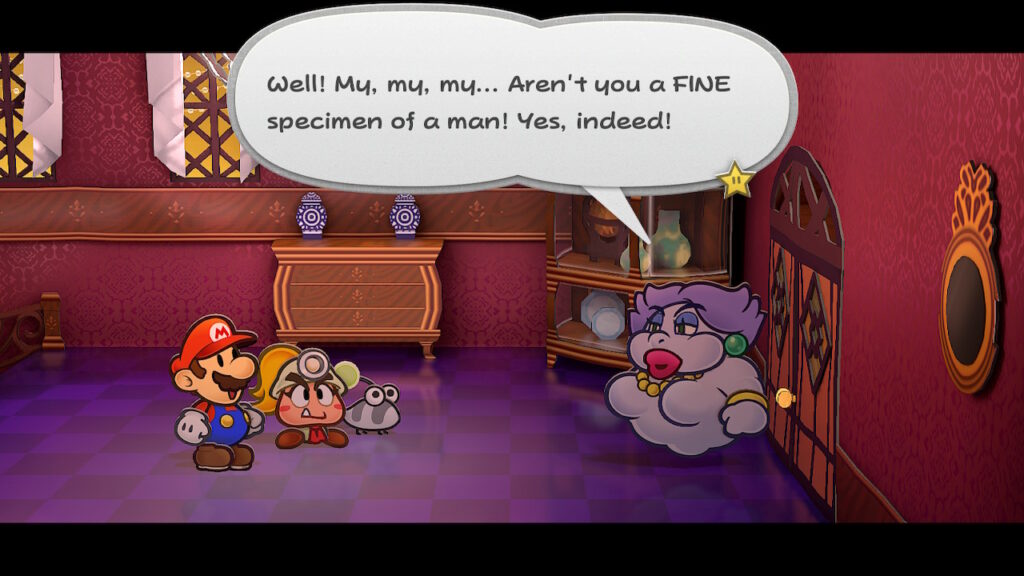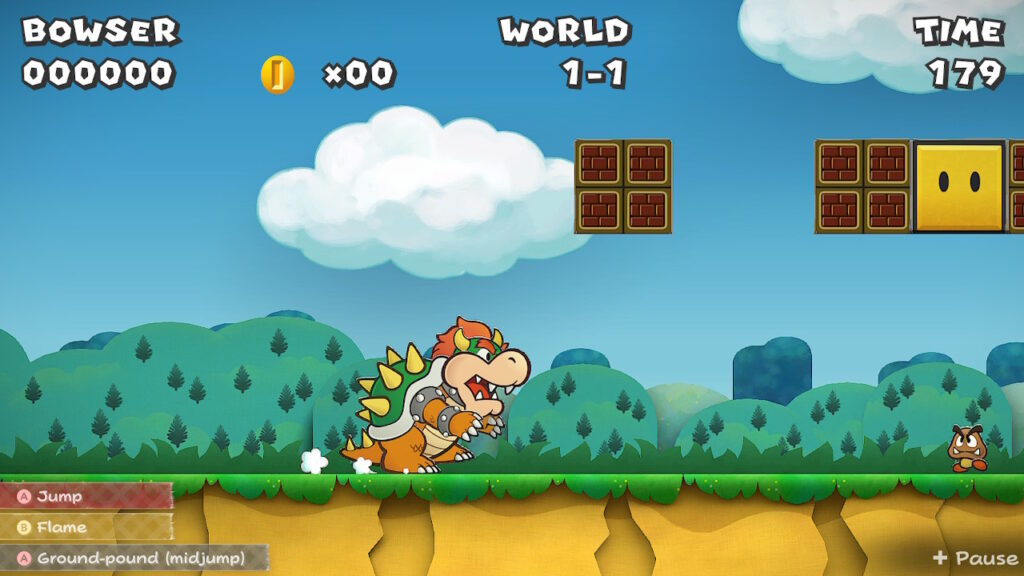- Genre: JRPG
- Platform: Switch
- Originally Available On: Gamecube
It’s been long enough since the original came out that I only vaguely remember the feeling of playing this game, but not so much the specifics of playing it. I can remember the feeling of the combat being good. I can remember the feeling of the characters and story being funny. What I remember more are the places where newer entries in the series felt like they “fell apart” for me. However, replaying Thousand-Year Door is making me realize that a lot of what I don’t like about modern entries already kind of existed in this one.

Now don’t get me wrong; the combat is this game is still fantastic and was really the driving force behind me playing the game. I would still argue that the core Paper Mario combat is one of leading examples of how to make turn-based RPGs heavily engaging to the player instead of a passive activity. Tying each attack to a different series of inputs for better damage gives the player that little bit of action to keep them involved in combat in a way that keeps their interest and allows it to feel more rewarding to not skip combat. Tying a defense boost to learning and remembering the various enemy attacks gives the player that little constant reward for being involved in combat that makes fighting an enemy for the tenth time more than just a chore.
It’s such a little thing but it makes the combat so much more fun. Other JRPGs have tried different things to get similar feelings. The Persona and SMT series have used type weaknesses to grant the players extra turns to achieve a similar result. The Bravely Default series allows the player to manipulate turn order to stack attacks and blow away enemies. Heck, the combat in Paper Mario was a direct evolution of the standard set by Super Mario RPG. Just giving the player something to do other than pick the attack and fall asleep is such a better result than the norm for the genre.

However, combat is one of those spots where doubt started to creep in. One of the things that really bugged me about more modern Paper Mario entries was how odd the power curve felt. It always felt like it was going in really weird jumps because the numbers were always inherently small. You’d kind of get to a new area, be beat up a bit, then be given a magic power upgrade and suddenly be effectively overpowered by only gaining one attack. That absolutely exists in TTYD, and wasn’t something I really remembered.
The places that I really started to notice it were when the jump and hammer upgrades were not in alignment. I’d suddenly be in areas where one of the two attacks effectively did 2-3 less damage, which meant that it took trash fights from one to two turns per-enemy or would do so much less damage with flower point attacks that the weaker one would be effectively useless on bosses unless mechanics of the fight required the specific attack. This was likely exacerbated by the way I was building, which was to go all-in on badge points so occasionally I would just get a HUGE upgrade swath because I would stumble upon a badge or two that added attack power that would totally change the way I tackled fights. When a boss has maybe 50 HP, suddenly being able to do 3 or 4 more damage per-turn is enormous. It felt off in a way that made me realize I honestly kind of prefer the larger numbers and slower power curve style of the Mario & Luigi series to this, because that at least feels like I’m making consistent growth throughout the game.

The other thing that I really forgot about was just how much walking there is. Holy hell do they like sending you across the same environments about 10 times per chapter for no reason. Sticker Star and Color Splash were somewhat guilty of this in that you’d be walking around a lot simply collecting the right cards for combat. Super Paper Mario was definitely guilty of making the player re-traverse areas way too often. Thousand Year Door just does it too a level that I don’t remember, or perhaps just shut out of my brain. It was so jarring at points that I’d literally put the game down for the night because I was tired of going through the same areas. The island chapter in particular was egregious for this where the hub town for the chapter and the goal for the story were on entirely different ends of the world and you had to cross it at least 4 or 5 times for different reasons.

I guess all that is to say that while this game is still good, it definitely has rough spots. The remake is definitely a strong product, and it brings the game to modern consoles in a visually gorgeous package. However, this is still a 20 year old games with 20 year old problems that at this point hadfaded from my memory. The thing is though, this came out within six months of the Super Mario RPG remake and that game has aged so much better. That one has the nice combat advantages of this series, but was a lot less quirky in the remainder of its JRPG tendencies and has much better overall environmental flow. Like the Mario & Luigi subseries, I think up against this game it ends up being the victor because its mechanics have just aged so much better.
